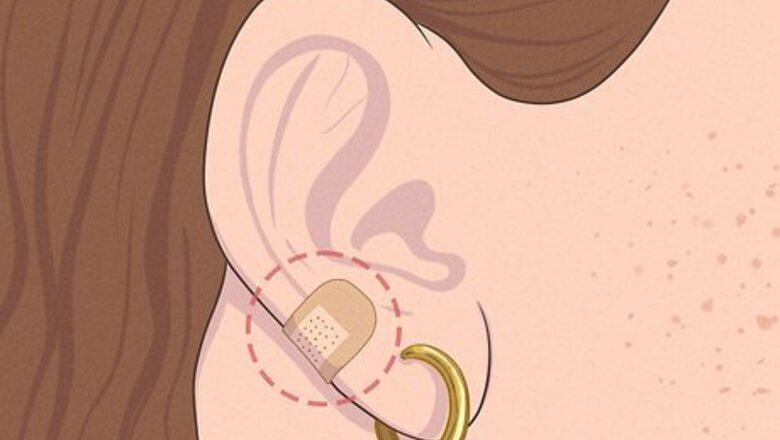
views
X
Research source
Luckily, there are a few tricks to use for temporarily hiding new earrings, and several options available to us once you’re past the six-week period.
Concealing Newly Pierced Ears
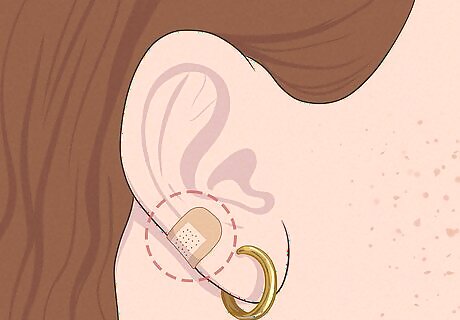
Cover them with flesh-colored band-aids. The notable word here is “cover.” This will not make any secret of your ears being pierced, but it will obscure the actual jewelry. Try this if secrecy is less of an issue than coverage. Useful for playing sports or engaging in any athletic activity. Double-check that the leagues you’re a part of will actually allow this method before getting your ears pierced, though. Various combinations of sports tape and bandages can be used to achieve the same purpose.
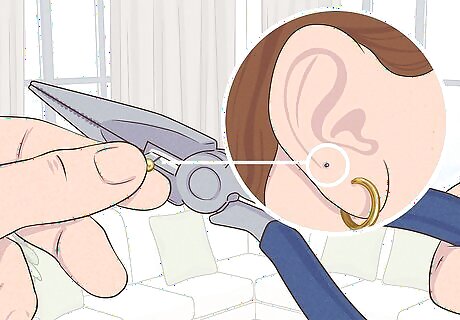
Cut the ball off of a small, inexpensive post earring. If you elect to have your ear pierced with the smallest post available, you can remove the earring’s back, push the post as far forward as possible (while keeping it in your ear) and snip the ball off of the post with wire cutters. After pushing the post back into its normal position and replacing the earring’s back, the post may resemble little more than a tiny mole It is recommended that you enlist the help of a parent, and take extreme caution when using wire cutters near your ear.
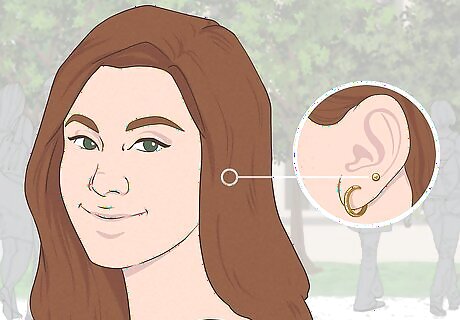
Wear your hair long and down. Longer hair (anything past the piercing site on your ear, for our purposes here) is extremely advantageous for hiding earrings. Consider growing your hair longer before getting your ears pierced, if you believe you will have need to hide the earrings. Give yourself at least a few inches past the piercing height for consistent coverage as you move around. Generally effective for hiding cartilage piercings regardless of gender, as shorter hairstyles can still effectively cover that part of your ear. For occasions where you need to tie longer hair back, put it in a low ponytail and let the hair hang down over your ears while it’s pulled back.
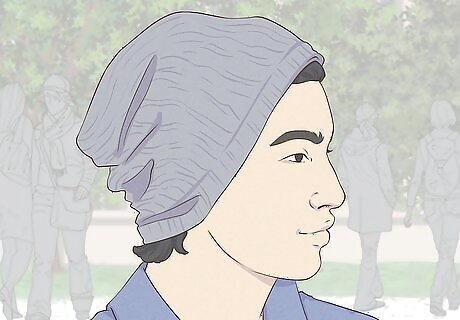
Don scarves and hats when appropriate. While these won’t work in every situation (good luck explaining why you’ve got a scarf wrapped around your head at the dinner table), they can be useful in colder weather jobs, or when trudging to and from school. Beanies, headbands, and fur trapper hats can be pulled low over your ears to get the job done. Baseball caps can also help simply by pushing voluminous, springy hair downward, to better cover your ears.

Keep your first earrings in continuously for six weeks. If your ears have only recently been pierced, you should not remove your earrings for any reason. Doing so before the aforementioned six-week period is over risks bruising, bleeding, piercing closure, and an increased risk of infection. This point cannot be emphasized enough! If you believe you will be unable to keep your earrings in for this long, consider waiting to get your ears pierced until the circumstances of your life allow it. Clip-on earrings are one temporary possibility available to you which require no such time commitment, and magnetic earrings are even available to try on cartilage piercings. Cartilage piercings, however, often require a much longer time to properly heal, taking anywhere from three to twelve months.
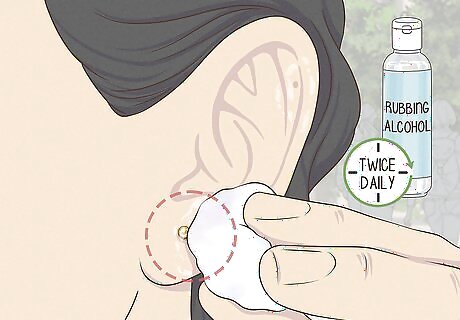
Take proper care of your newly pierced ears. For several day after the act, both earring and lobe should be gently cleaned with rubbing alcohol, applied twice daily by a cotton swab or ball. Your earrings will become quite noticeable if the area becomes inflamed! Always wash your hands before cleaning your earrings and piercing site. Recommendations vary when it comes to the issue of whether or not to rotate your earrings; while some suggest rotating them slightly at night before bed, others suggest abstaining entirely. Adhere to the instructions of the professional who pierced your ears, but sources agree in their advisement against perpetually twisting and fidgeting with your earrings.
Keeping Your Earrings Quiet
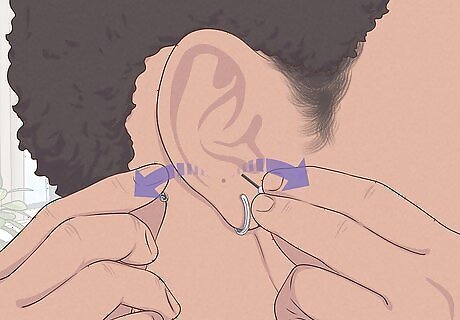
Remove your earrings when necessary. A bit of a no-brainer, perhaps, but once you're past those first six weeks, simply remove your earrings when the situation calls for it. Bodies can close their piercing sites at unpredictable rates, but it's highly unlikely for them to close over a day or weekend. Most piercings will close without anything in them, taking anywhere from a few days to several weeks. A thin membrane may grow over the hole, without the hole actually closing; jewelry can typically be pushed back through this with minimal pain. Try lubricating the area with antibiotic ointment if you encounter any difficulty. Reopening the closed piercing is also possible, if the earrings must remain out of your ears for extended periods of time. Cartilage piercings, as opposed to lobe piercings, can remain without jewelry for a much longer time without closing. As was mentioned in part one, though, the healing process for these is also much longer compared to lobe piercings.
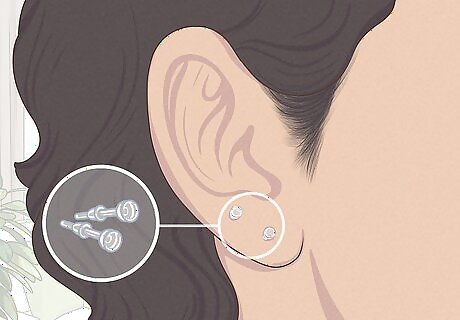
Use quartz retainers. Clear, quartz jewelry can be worn to keep the earring tunnel open with discrete results. While far from invisible, clear jewelry requires fairly close inspection to detect. Clear acrylic is less recommended for its quality issues, but it’s also a viable option. Clear jewelry is not recommended for your very first earrings; your first earring should be 14-carat gold or stainless steel, as these are less likely to cause infection or swelling. Other metals can also induce allergic reactions.
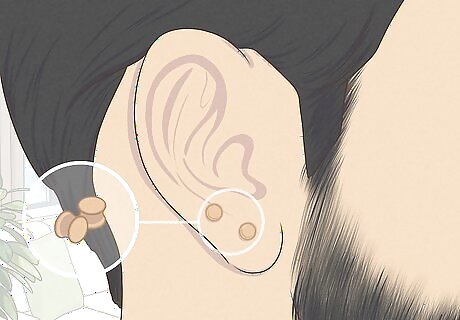
Choose flesh-colored jewelry. Small, flesh-colored posts work similarly to clear ones, but may be even less noticeable. Stretched ears in particular—while difficult to hide—will have more success with flesh-colored plugs. These can be found in a variety of materials, including acrylic and various silicones.
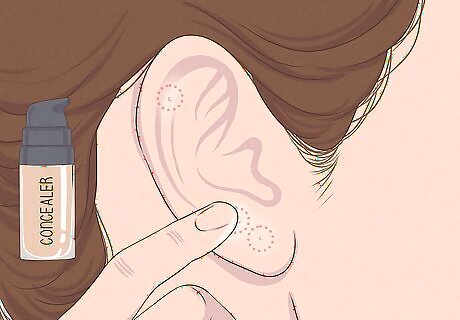
Apply concealer to your piercings. If you’d like it to be secret that you have your ears pierced at all, remove your earrings and apply a small dab of concealer or foundation to the hole. Make sure to choose the right shade for your skin tone.
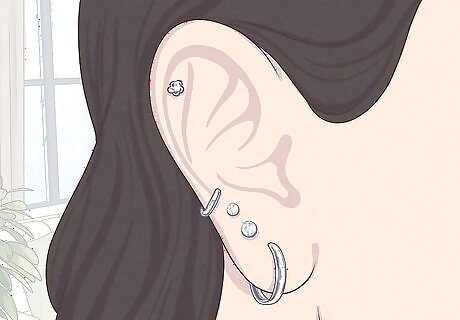
Take advantage of perspective with multiple piercings. If you wish to draw less attention to a second piercing, for example, try choosing a much bigger stud, jewel, or hoop for your first piercing. With the first piercing drawing the eye, your second piercing will be less noticeable.
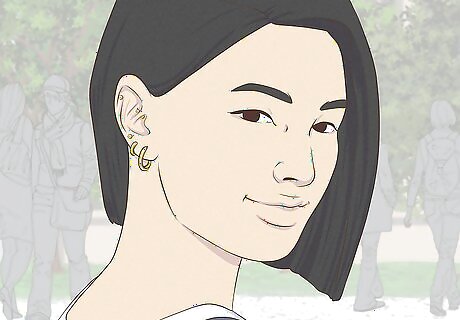
Pick your battles. For as much as you may want to wear a certain style of earring, or to go for something more stylish like a rook, conch, industrial, or daith piercing, consider the environments you’ll be wearing these in. You may not have to expend so much energy hiding your earrings or arguing with your boss if you opt for minimalist jewelry, or more conservative piercing styles. At the same time, these are your ears you’re adorning. You should simply ensure that you’re aware of the situations in your life which may be less amenable to more adventurous ear choices.




















Comments
0 comment